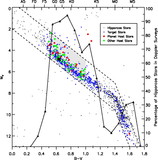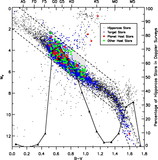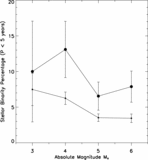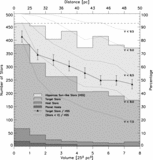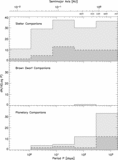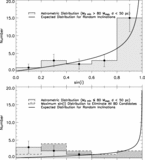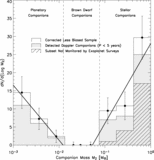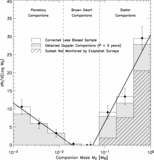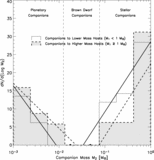Image Details
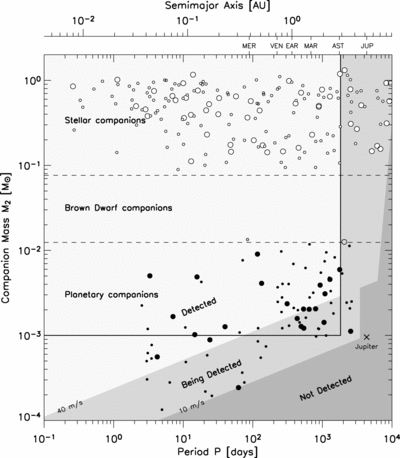
Caption: Fig. 5.
Brown dwarf desert in mass and period. Estimated companion mass ﹩M_{2}﹩ vs. orbital period for the companions to Sun‐like stars of our two samples: companions with hosts closer than 25 pc (large symbols) and those with hosts closer than 50 pc, excluding those closer than 25 pc (small symbols). The companions in the thick solid rectangle are defined by periods ﹩P< 5﹩ yr and masses ﹩10^{-3}< M_{2}\lesssim M_{\odot }﹩ and form our less biased sample of companions. The stellar (open circles), brown dwarf (gray circles) and planetary (filled circles) companions are separated by dashed lines at the hydrogen and deuterium burning onset masses of ﹩80M_{\mathrm{J}\,}﹩ and ﹩13M_{\mathrm{J}\,}﹩, respectively. This plot clearly shows the brown dwarf desert for the ﹩P< 5﹩ yr companions. Planets are more frequent at larger periods than at shorter periods (see Fig. 6). The "detected," "being detected," and "not detected" regions of the mass‐period space show the extent to which the high‐precision Doppler method is currently able to find companions (Lineweaver & Grether 2003). See the Appendix for discussion of ﹩M_{2}﹩ mass estimates.
Copyright and Terms & Conditions
© 2006. The American Astronomical Society. All rights reserved. Printed in U.S.A.


